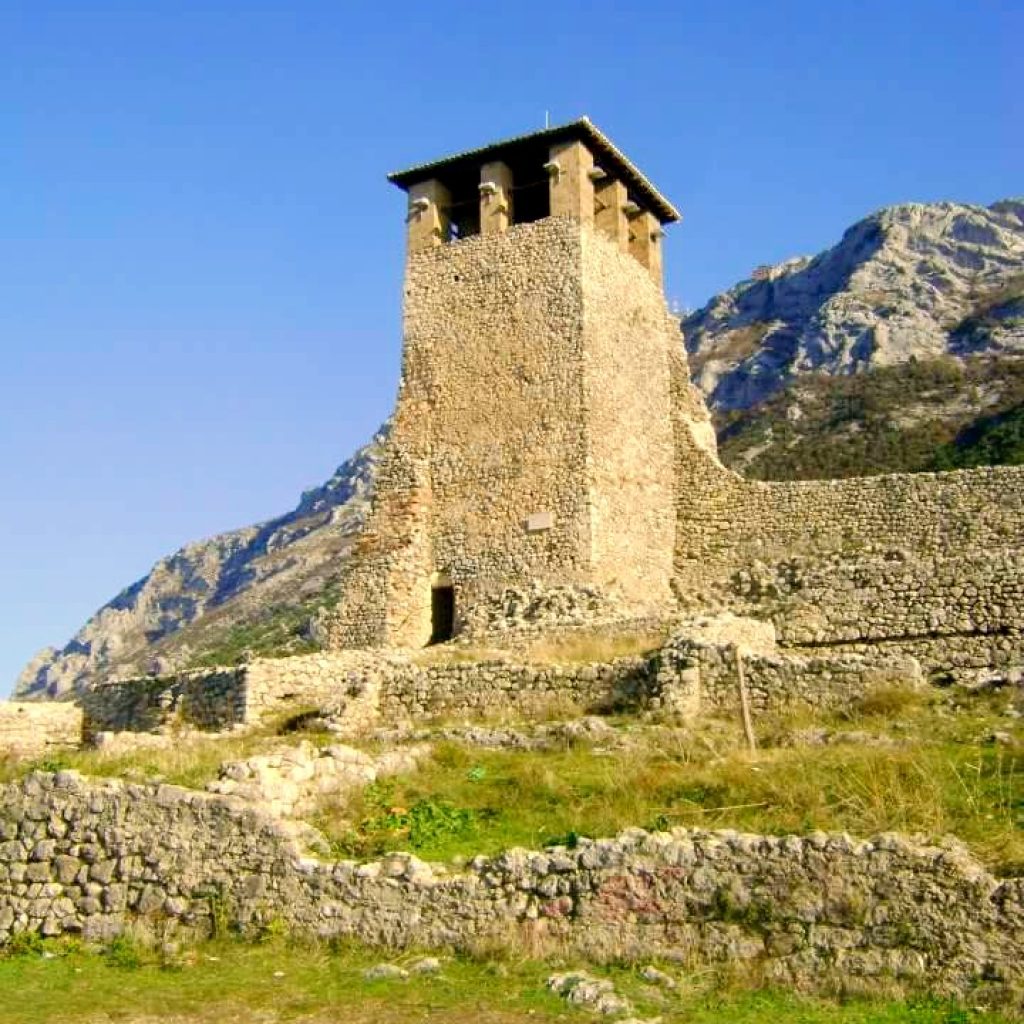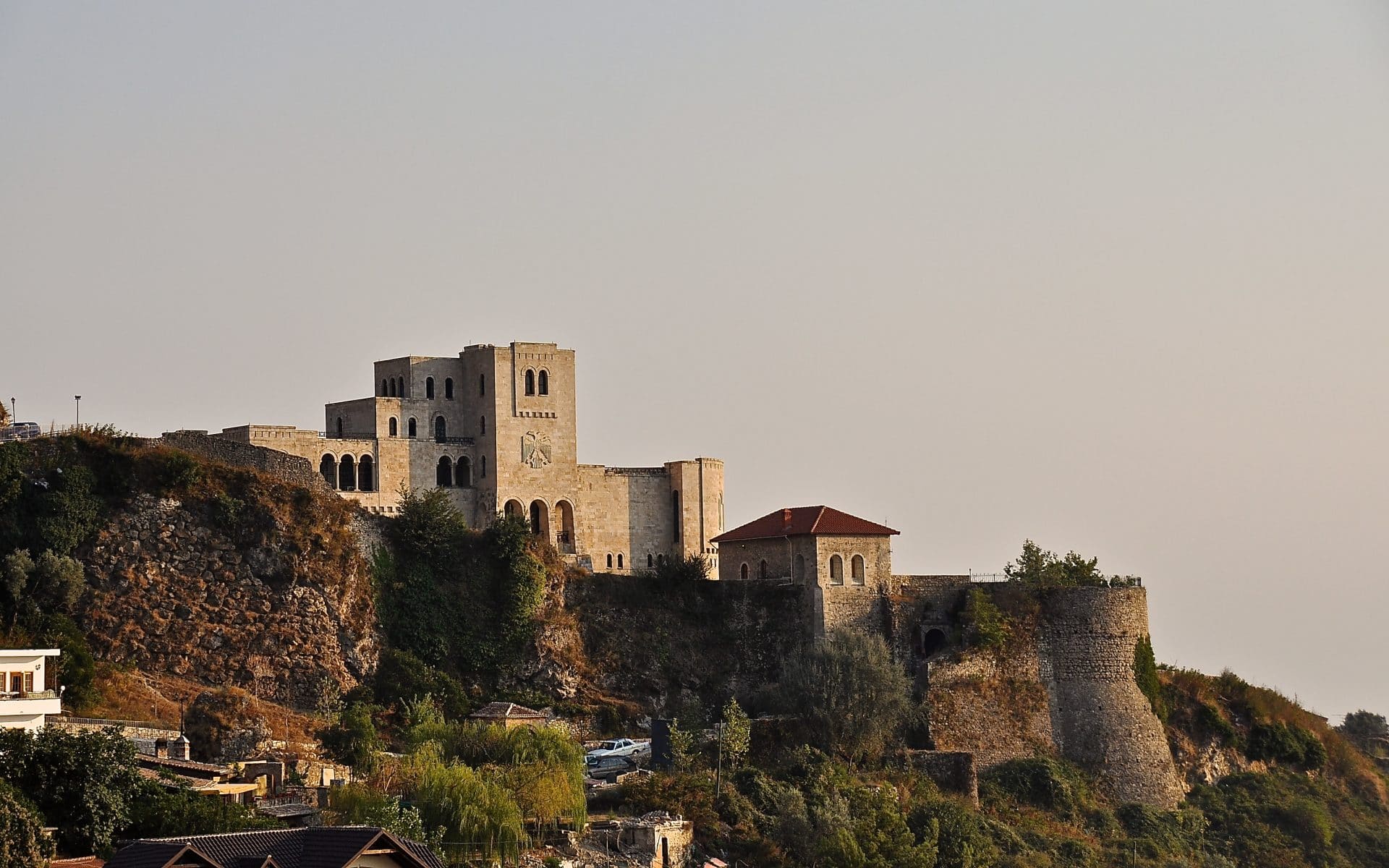In this article, you will read what to visit in Kruja. Kruja was the most important Balkan towns during the 15th century. It successfully withstood at least three major sieges by the Ottoman Empire.
The medieval hero Gjergj Kastrioti (a.k.a. “Scanderbeg”) had a base of operations there. The Albanians consider him a symbol of resistance as well as a savior. Even the Ottomans believed that a supernatural force dwelled in him. Because of this, after his death, they destroyed his tomb in order to take parts of his bones as good luck charms.
What to visit in Kruja
The Museum of Scanderbeg was designed as an ancient fortress. It is composed of separate pavilions, each representing a piece of Kruja, Albania’s heroic struggle against Ottoman invasion. These include the pavilion of antiquity and early middle age, the Albanian princedom pavilion, the pavilion of the ottoman invasion, the medieval fortress pavilion, and the Albanian resistance pavilion.
Each of these, in their own way, reflect the life and activity of Albania’s most famous national hero.
Kruja Castle was built in the 5th and 6th centuries A.D. Charles I of Anjou rebuilt the walls in the 13th century, and the Turks rebuilt them again some centuries later. In 1617 an earthquake caused great damage to the walls, after which they were reinforced with 9 towers. The highest and most well-defended part of the fortress is a clock tower. It used to serve as an observation platform during times of war.

What to visit in Kruja part 2
The Ethnographic Museum is located near Scanderbeg’s museum. It resides in one of the characteristic dwelling houses of Kruja, this one dating back to 1764. Within, you can find 16 rooms, each exhibiting original historic ceramics, wood, cotton, wool, silk, stone as well as folk dresses. Together, these give you a clear picture of the history of the district as you become acquainted with its traditions and customs.
The museum is in a lovely old house built in 1764 which belonged to one of the wealthy families living in the castle. It is set in a walled courtyard with two gateways. It is a typical Ottoman style house with storage rooms on the ground floor and with the living quarters above. Most of the items are original.
On the porch is a quern (traditional equipment for making leather). One of the rooms contains a forge. Another has a small water-driven mill to grind flour. There is also a display to make the traditional felt hats worn by Albanian men as well as a machine for washing the feet. Another room contains a large oil crush operated by donkey power, and a press to extract the oil.
The doorways are low so people have to bow to enter or leave the room, thus showing respect. There are display cases on the landing area with wedding clothes of both bride and groom. The men’s room has a fireplace and examples of weapons and musical instruments are hanging on the walls.
Above the doorway is a gallery where the women could sit and see if the men wanted anything to eat or drink. As marriages were arranged this was often the first view a girl would have of her future husband. As well as being used for cooking, grandparents would often sleep on low mattresses near the fire.
What to visit in Kruja part 3
The Old Bazaar has some of the best shopping in town. The bazaar was reconstructed in the 1960s, preserving the same look and feel as was present in the 18th century. All of the shops, for example, are still made entirely of wood.
What else to visit in Kruja
See the National Park of Qafeshtama. The National Park of Qafshtama comprises an area of 2,000 hectares. The road that leads to the entrance of the park goes through the narrow Vaja Canyon, about 600-700 meters deep, formed by the Droja River.
Legend tells that after the occupation of Kruja, Albania by the Turks, ninety young virgins from the town threw themselves down to the bottom of the canyon in order not to fall into the Turks’ hands. Qafë Shtama Park consists of pine forests, which, when paired with great general climate conditions, make for great hiking.
In the Qafë Shtama Park, you can also find the Burimi i Nënës Mbretëreshë (Queen Mother’s Spring), from which clear water, noted for its health-promoting properties, flows. Qafë-Shtama is suitable for nature tourism including hiking, camping, and more.
Eat, drink and enjoy the view. After visiting some of the most popular places of Kruja, you can relax in one of the local restaurants. There, you can test the traditional food while enjoying the view.

0 Comment